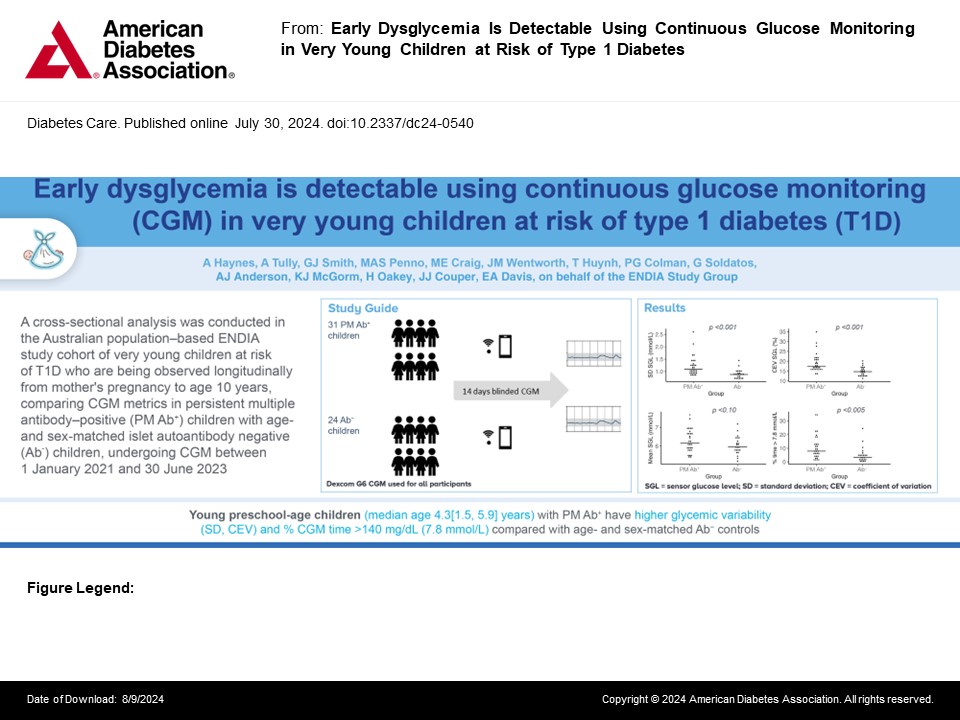Early blood sugar changes with CGM in very young children at risk of T1D
Early blood sugar changes with CGM in very young children at risk of T1D

We’re very pleased to be able to share one of our latest published paper with our ENDIA friends and families! Using continuous glucose monitoring (CGM), we wanted to gather more detailed information about type 1 diabetes (T1D) development. Our study explored the use of CGM in children at risk of developing T1D in the Australian ENDIA study.
Our research team compared CGM data collected from 31 children who developed 2 or more persistent islet autoantibodies (markers of early-stage T1D) with CGM data collected in 24 children without islet autoantibodies.

The study found children with islet autoantibodies had higher glucose variability and had more time with higher glucose levels compared to those without islet antibodies.
The results show that CGM can detect changes in glucose levels and patterns in very young children known to be at increased risk of developing clinical T1D, before they have any symptoms or signs of the condition.
Future studies will investigate the use of CGM for tracking changes in glucose patterns and levels in these children to better understand how and when these change in those who do, or do not, progress to developing clinical T1D.
The paper is available online at: https://doi.org/10.2337/dc24-0540

